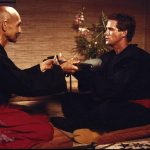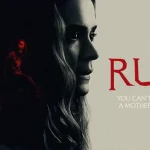The Hobbit: The Battle of the Five Armies (2014)
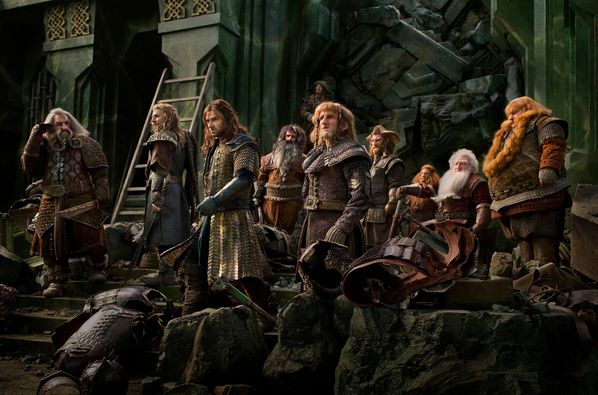
“The Hobbit: The Battle of the Five Armies”: A Grand Conclusion Directed by Peter Jackson
Suggested videos for you:
Blitz (2011)
The Legend of a Hero Specializing in Hunting the Most Terrible Monsters in Greece
Released in 2014, “The Hobbit: The Battle of the Five Armies” is the epic conclusion to Peter Jackson’s adaptation of J.R.R. Tolkien’s beloved novel, “The Hobbit.” As the third installment in a trilogy, this film follows the events of “An Unexpected Journey” and “The Desolation of Smaug,” bringing to a climactic close the adventures of Bilbo Baggins and the company of dwarves led by Thorin Oakenshield. With its stunning visuals, intricate storytelling, and compelling themes, the film serves as a fitting finale to the prelude of “The Lord of the Rings.”
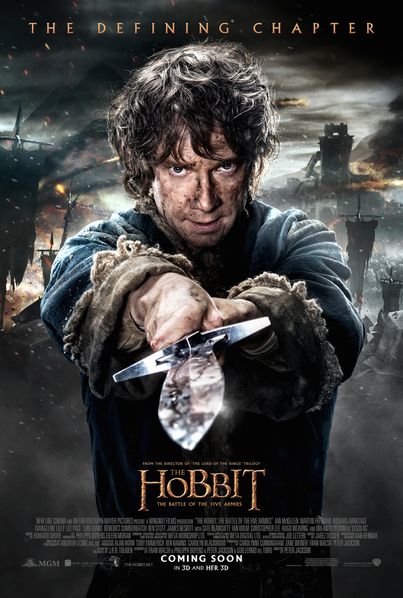
The narrative picks up immediately after the events of “The Desolation of Smaug,” with the dragon Smaug (voiced by Benedict Cumberbatch) wreaking havoc on Lake-town. While Bard the Bowman (Luke Evans) heroically attempts to defend his home, Bilbo (Martin Freeman) and the dwarves occupy the Lonely Mountain, where Thorin’s obsession with the Arkenstone and the treasure leads to internal strife. As various factions—elves, men, and dwarves—prepare for conflict over the mountain’s riches, the looming threat of an army of orcs, led by Azog the Defiler (played by Manu Bennett), forces these groups to confront their differences and unite for survival. The film culminates in a massive battle that showcases both the brutality of war and the profound bonds of friendship.

Peter Jackson’s direction is characterized by his exceptional ability to create grand, sweeping visuals that bring Tolkien’s world to life. The film boasts stunning cinematography by Andrew Lesnie, with breathtaking landscapes of Middle-earth and intricately designed battle scenes that immerse the audience in the action. Jackson’s use of practical effects, combined with CGI, allows for a seamless blend of reality and fantasy, enhancing the film’s overall impact. The battle sequences are particularly noteworthy, featuring large-scale conflicts filled with intense choreography and emotional stakes.
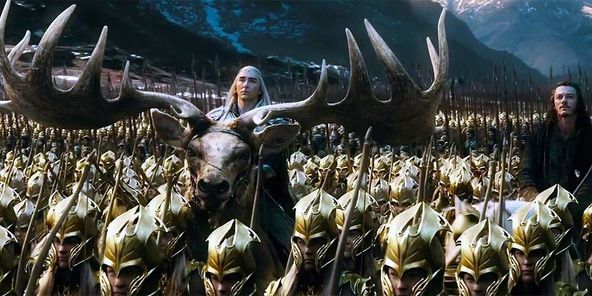
“The Hobbit: The Battle of the Five Armies” is primarily classified as a fantasy adventure film, but it also incorporates elements of action and drama. The film delves into themes of greed, heroism, and the consequences of war. As characters grapple with their ambitions and desires, the narrative emphasizes the importance of unity and sacrifice in the face of overwhelming adversity. Bilbo’s journey reflects the idea that true courage is not merely physical but also moral, as he navigates the complexities of loyalty and friendship amidst the chaos.
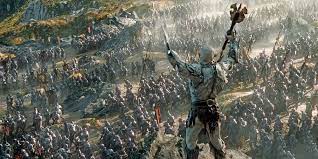
Martin Freeman delivers a heartfelt performance as Bilbo Baggins, capturing the character’s growth from a reluctant adventurer to a brave hero. His portrayal of Bilbo’s internal conflicts adds depth to the narrative, making his decisions resonate with the audience. The supporting cast, including Richard Armitage as Thorin, Evangeline Lilly as Tauriel, and Ian McKellen as Gandalf, enriches the film’s emotional landscape. The dynamics between these characters highlight the themes of leadership, sacrifice, and the power of kinship, adding layers to the overarching story.
Upon its release, “The Hobbit: The Battle of the Five Armies” received mixed reviews from critics but was praised for its visual spectacle and thrilling action sequences. While some viewers found the pacing uneven, many appreciated the film’s emotional depth and the resolution of long-standing character arcs. The film was a commercial success, solidifying its place within the larger narrative of Middle-earth and concluding Jackson’s ambitious adaptation of Tolkien’s works.
In conclusion, “The Hobbit: The Battle of the Five Armies” is a grand and visually captivating film that serves as a fitting conclusion to the trilogy. Directed by Peter Jackson, the film artfully combines fantasy, action, and drama, inviting audiences to explore themes of courage, unity, and sacrifice. Through Bilbo Baggins’ journey and the epic battles that unfold, the film resonates with viewers, making it a memorable addition to the rich tapestry of Middle-earth. As a final chapter in this beloved saga, it leaves audiences with a sense of closure and nostalgia, celebrating the enduring power of friendship and bravery.





